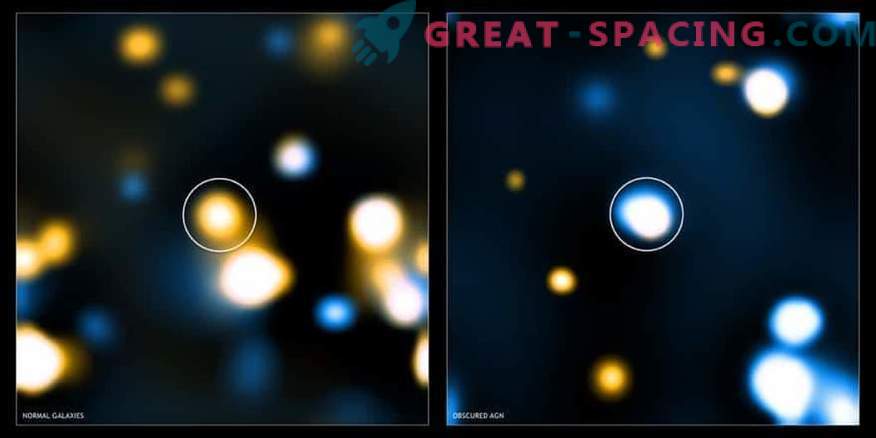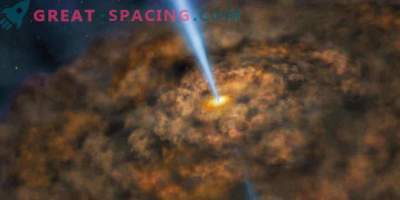
Right: Image of distant supermassive galaxies found in the Chandra X-ray range. Left: Spitzer infrared review.
Most galaxies have a supermassive black hole at their center. It grows up due to mass accretion. It can be seen during periods of feeding, but not in direct visibility, but in devices that capture ultraviolet and x-rays. When the active phase begins, it becomes the active galactic nucleus (AGN). Many of them are in normal galaxies, where star formation develops along with the accretion of black holes. But scientists do not quite agree with the true nature of host galaxies.
It is very difficult to distinguish the contribution to emission from AGN and from the galaxy itself. Even Hubble can't figure it out because the galaxy is full of dust. Such objects are called “hidden AGNs”. In the usual observation, they look weak spots, but it is known that their luminosity is equal to 10 billion suns.
Astronomers have decided to bring an exact sample of the hidden AGN - those whose infrared radiation is 20 times higher than the x-ray. To do this, selected 265 AGN, and then found out which of them were in the “hidden” state. To do this, it was necessary to collect the spectral distribution of radiation, combine with infrared and ultraviolet radiation, as well as optical data. This information was used in the model to highlight the common infrared component. After the analysis, 182 objects remained. Then scientists took up very weak optical images of nuclear areas and created one whole snapshot. It turned out that this nuclear region is too compact in angular size. They believe that the hidden AGNs should have survived the compression process — cold gas flows pouring into the galaxy and reach the nucleus, squeezing it in size. These results are very important because they explain the development of these formations, and also help to understand what happened in the galaxies of the early Universe (they also look unusually compact).











































